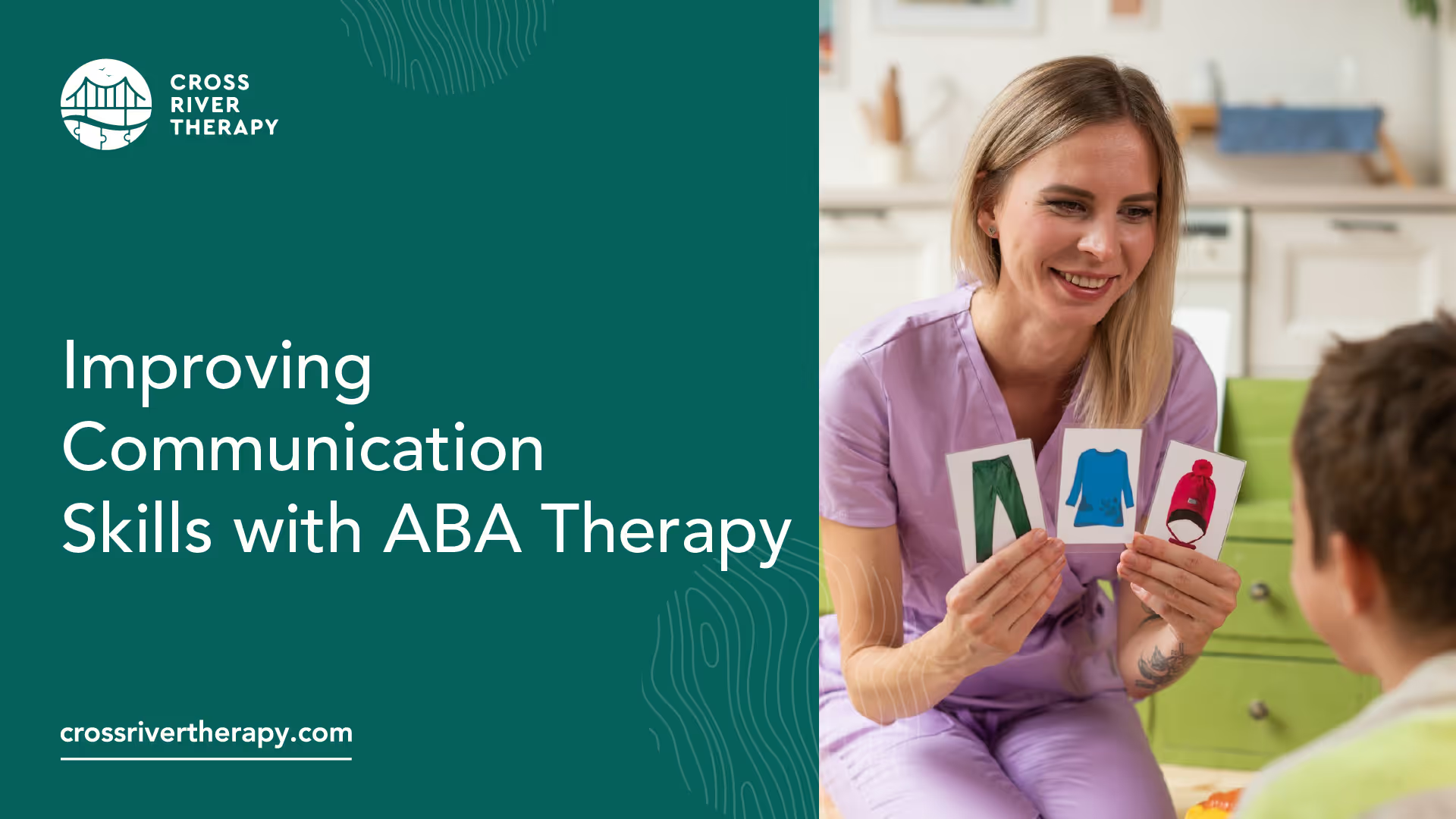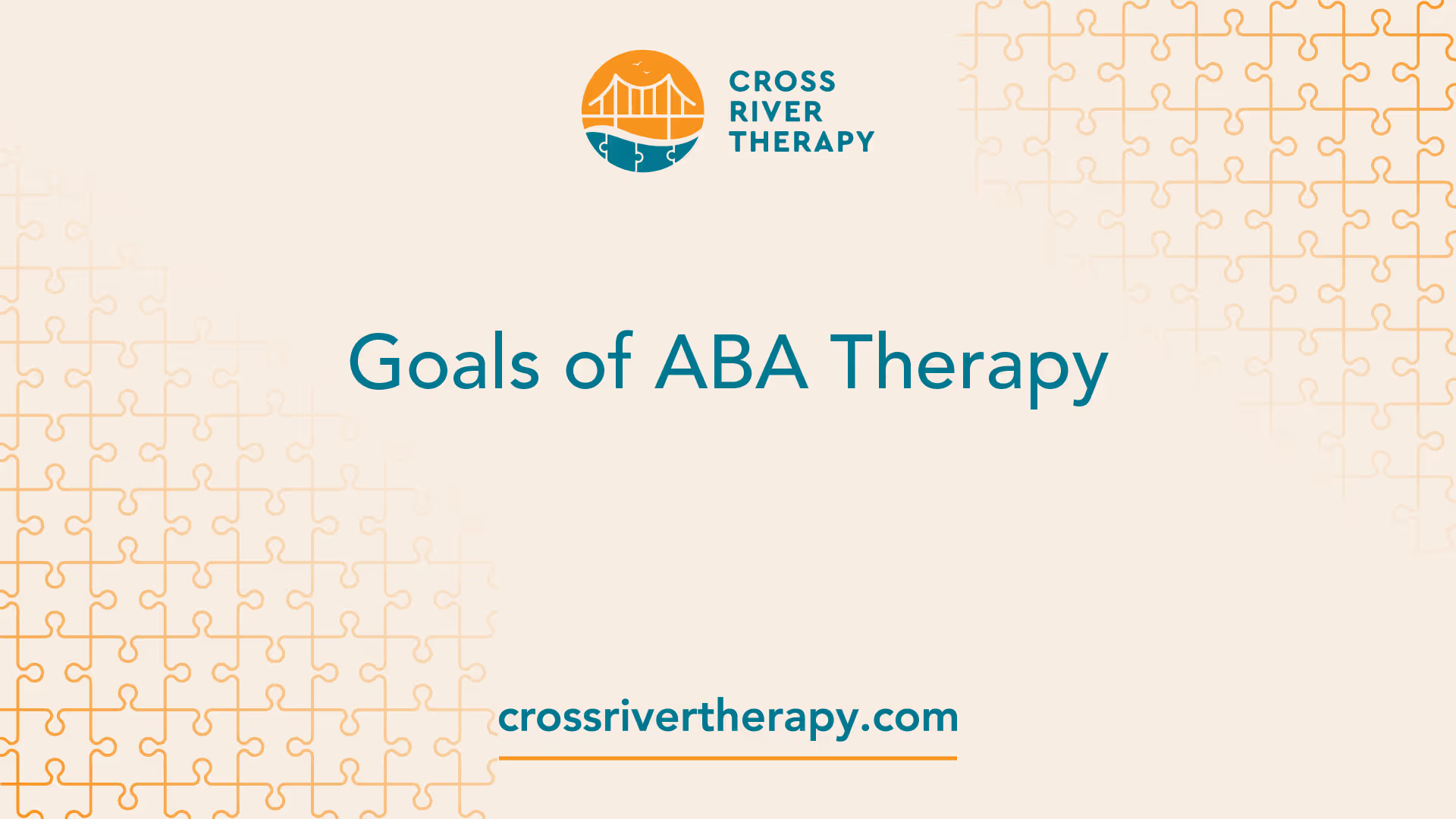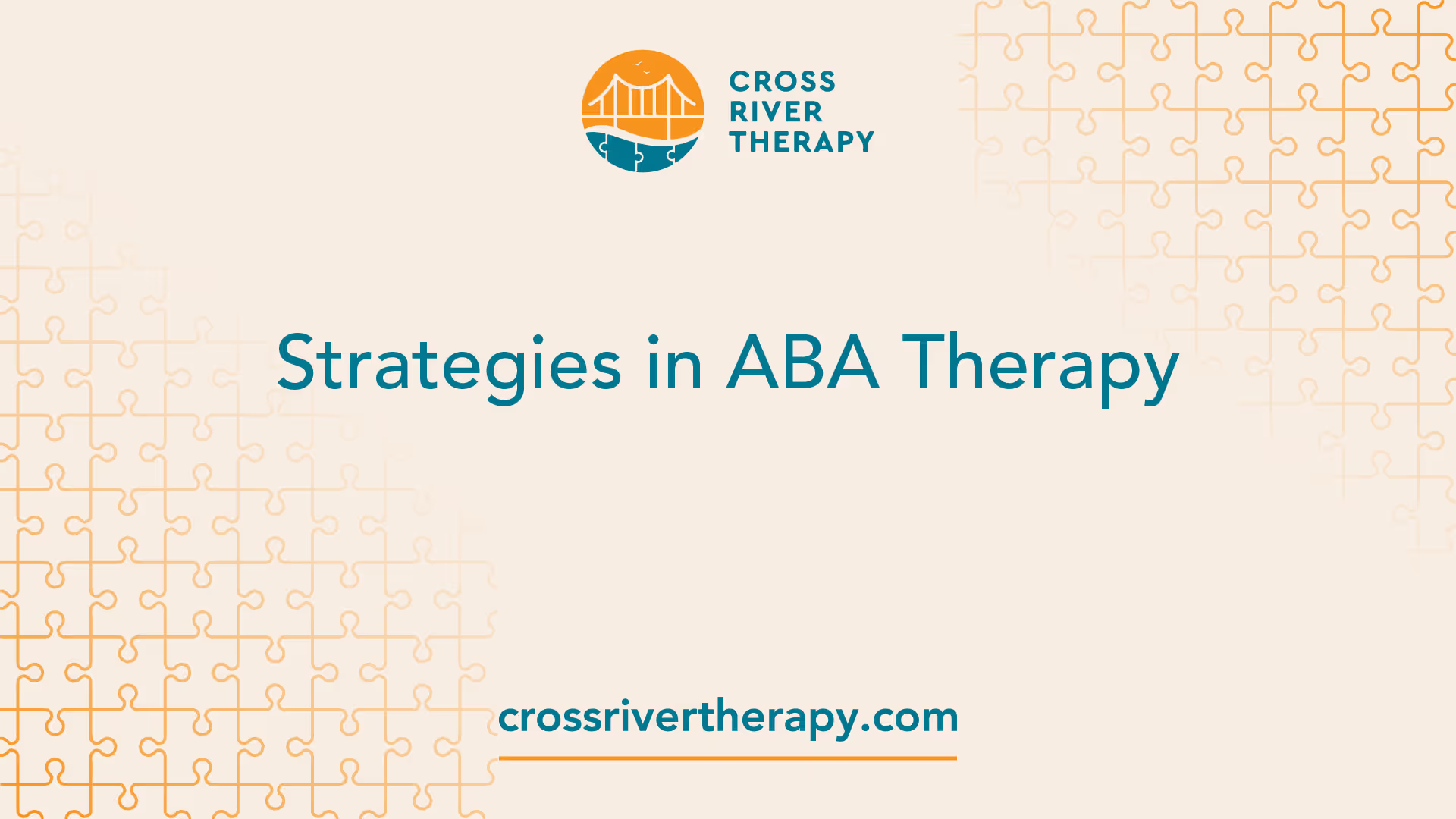Improving Communication Skills with ABA Therapy
Discover how this collaborative approach empowers children with autism.
ABA Therapy for Communication Skills
When it comes to addressing communication difficulties in individuals with autism, ABA therapy (Applied Behavior Analysis) has shown great promise. Let's explore the importance of communication in autism and the success of ABA therapy in improving language skills.

Importance of Communication in Autism
Communication plays a vital role in the lives of individuals with autism. However, many children with autism face challenges in effectively expressing themselves verbally and nonverbally. These difficulties can impact their ability to communicate thoughts, feelings, and needs, hindering social interactions and overall quality of life.
By addressing these communication barriers through ABA therapy, individuals with autism can develop the skills necessary to communicate more effectively, fostering meaningful connections with others.
Success of ABA Therapy in Language Skills
Over two decades of research from behavior analytic journals have consistently demonstrated the success of ABA techniques and procedures in improving language skills in children with autism.
ABA therapy employs evidence-based strategies to break down language into smaller, manageable steps, allowing individuals with autism to learn and practice language skills more systematically. By providing structured and individualized interventions, ABA therapy supports the development of communication skills such as vocabulary, sentence structure, social communication, and expressive and receptive language.
Through a collaborative approach involving skilled behavior analysts, therapists, and parents, ABA therapy aims to create a supportive environment that promotes effective communication. By utilizing various techniques, such as discrete trial training (DTT), antecedent-based interventions (ABI), and functional communication training (FCT), ABA therapists tailor interventions to meet the specific needs of each individual.
By targeting communication difficulties through ABA therapy, individuals with autism can experience significant improvements in their ability to express themselves, understand others, and engage in meaningful interactions.
In the next sections, we will explore the goals of ABA therapy, the strategies used, the importance of parent involvement, the overall effectiveness of ABA therapy, and the structure of ABA therapy sessions.
Goals of ABA Therapy
ABA therapy, or Applied Behavior Analysis therapy, is a widely recognized and evidence-based intervention for individuals with autism spectrum disorder (ASD). This therapy aims to enhance the quality of life and overall functioning of individuals with ASD by addressing various areas, including communication skills. Let's explore the goals of ABA therapy in more detail.

Enhancing Quality of Life
One of the primary goals of ABA therapy is to improve the quality of life for individuals with ASD. ABA therapy focuses on reducing problematic behaviors, such as communication deficits, social skills difficulties, repetitive behaviors, and self-care deficits. By utilizing positive reinforcement techniques, ABA therapists can effectively reduce problematic behaviors, leading to an improved quality of life and overall functioning for individuals [3].
Targeted Skill Development
ABA therapy places a strong emphasis on skill-building across various domains. The therapy aims to teach individuals with autism new skills and abilities that are relevant to their everyday lives. These skills can include communication, social interaction, self-care, academic skills, and more. By breaking down complex skills into smaller, manageable steps, known as discrete trials, ABA therapists effectively teach individuals new skills. Positive reinforcement strategies, such as rewards or praise, are used to encourage and reinforce desired behaviors, making them more likely to occur again in the future.
The targeted skill development in ABA therapy is based on individualized assessments and goals. ABA therapists work closely with individuals and their families to identify specific areas of focus and develop tailored intervention plans to promote skill acquisition and generalization.
By enhancing communication skills and targeting skill development in various areas, ABA therapy aims to empower individuals with autism and improve their overall quality of life. The therapy's positive impact can extend beyond the duration of therapy sessions, leading to long-term benefits and positive outcomes for individuals with ASD.
Strategies in ABA Therapy
ABA Therapy (Applied Behavior Analysis) employs various strategies to improve communication skills in individuals with autism. These strategies are tailored to the unique needs and goals of each individual. Here are three common strategies used in ABA Therapy:

Discrete Trial Training (DTT)
Discrete Trial Training (DTT) is a prominent teaching strategy utilized in ABA Therapy. It involves breaking down skills into small, distinct elements and systematically teaching each element. During DTT, the therapist presents a specific instruction or question, and the individual is encouraged to respond. Positive reinforcement, such as praise or a small reward, is given immediately after a correct response to reinforce the desired behavior. This structured approach helps individuals with autism learn new skills and develop communication abilities.
Antecedent-based Interventions (ABI)
Antecedent-based Interventions (ABI) focus on modifying the environment to reduce the likelihood of triggering interfering behaviors. In ABI, therapists identify and manipulate antecedents, which are events or stimuli that precede a behavior. By altering antecedents, such as changing the setting or providing visual supports, therapists aim to create an environment that supports communication and minimizes distractions. This approach helps individuals with autism focus on the intended antecedent and promotes effective communication.
Functional Communication Training (FCT)
Functional Communication Training (FCT) is a key strategy used in ABA Therapy to teach individuals with autism appropriate ways to communicate their needs and wants. FCT involves teaching alternative, more functional communication skills that can replace problematic behaviors. Therapists work closely with individuals to identify their specific communication needs and develop strategies to address them. Through differential reinforcement, individuals are motivated to replace challenging behaviors with appropriate phrases, gestures, or other forms of communication. FCT helps individuals with autism effectively express themselves and enhance their overall communication skills.
By implementing these strategies, ABA Therapy aims to improve communication skills in individuals with autism. These techniques are designed to be tailored to each individual's needs and promote positive outcomes in their ability to effectively communicate and engage with others.
Parent Involvement in ABA Therapy
When it comes to ABA therapy, involving parents in the treatment process is crucial for the progress and success of children with autism in developing their communication skills. Two key aspects of parent involvement in ABA therapy are parent-implemented intervention (PII) and a collaborative approach with parents.
Parent-implemented Intervention (PII)
Parent-implemented intervention (PII) is an integral part of ABA therapy, emphasizing the active involvement of parents in implementing ABA techniques and strategies. PII involves training and collaboration with parents to provide ABA interventions, making it a highly effective way of teaching and supporting children on the autism spectrum.
Through PII, parents learn and acquire the necessary skills to implement ABA techniques in everyday situations and activities. This empowers parents to support their child's communication development beyond the therapy sessions, creating a consistent learning environment. By working closely with ABA therapists, parents can reinforce the skills learned during therapy, leading to greater generalization and maintenance of those skills.
Collaborative Approach with Parents
A collaborative approach with parents is a fundamental aspect of ABA therapy. ABA therapists recognize the pivotal role that parents play in their child's progress and development. Collaborative efforts between therapists and parents ensure a comprehensive and holistic approach to improving communication skills.
Therapists work closely with parents to establish shared goals and develop individualized treatment plans that address the unique needs of each child. Regular communication and collaboration between therapists and parents allow for ongoing assessment and adjustments to the therapy approach, ensuring the child's progress is continuously supported.
Research has shown that parental synchrony and sensitivity significantly influence the effectiveness of interventions for children with autism spectrum disorder (ASD) in terms of communication and social interaction. A collaborative approach allows therapists to provide guidance and support to parents, helping them develop strategies to enhance their interactions with their child and facilitate communication skills.
By actively involving parents in the therapy process, ABA therapy maximizes the child's potential for progress and success. Parent-implemented intervention (PII) and the collaborative approach foster consistency, generalization, and continued growth outside of therapy sessions.
In the next sections, we will explore the effectiveness of ABA therapy in the long term and the positive outcomes it can bring to individuals with autism spectrum disorder (ASD).
Effectiveness of ABA Therapy
ABA therapy has been widely recognized for its effectiveness in improving communication skills in individuals with Autism Spectrum Disorder (ASD). Let's explore the long-term benefits and positive outcomes associated with ABA therapy.
Long-term Benefits
ABA therapy aims to enhance the quality of life for individuals with ASD by improving their functional abilities and reducing problematic behaviors, including communication deficits. Research has shown that comprehensive ABA-based interventions can have a positive impact on various aspects of an individual's development, leading to long-term benefits. These benefits include:
- Intellectual functioning: ABA therapy has been found to have positive effects on intellectual functioning, such as cognitive abilities and problem-solving skills.
- Language development: A significant improvement in communication and language skills is observed in individuals with ASD who undergo ABA therapy. This equips them with tools to effectively express themselves and engage in meaningful interactions with others [3].
- Daily living skills: ABA therapy helps individuals with ASD acquire essential daily living skills, such as self-care routines and independent living skills.
- Social functioning: ABA therapy addresses social skills difficulties commonly experienced by individuals with ASD. It focuses on teaching social interaction skills, fostering social engagement, and promoting positive relationships with peers and family members.
Positive Outcomes for Individuals with ASD
Studies have shown that individuals who received ABA therapy during childhood experience positive outcomes throughout their lives. For instance, a study found that adults who received ABA therapy as children had better outcomes in areas such as employment, independent living, and social functioning compared to those who did not receive ABA therapy. This highlights the long-lasting impact of ABA therapy on the overall development and functioning of individuals with ASD.
ABA therapy is considered an evidence-based best practice treatment for individuals with ASD by the US Surgeon General and the American Psychological Association. Its effectiveness in improving communication skills and other areas of development has made it a widely recommended intervention. By providing structured and individualized interventions, ABA therapy offers individuals with ASD the opportunity to reach their full potential and lead fulfilling lives.
For more information about ABA therapy and its applications, you can visit our articles on aba therapy for adolescents, finding qualified aba therapists, aba therapy vs. other autism treatments, and aba therapy and school integration.
ABA Therapy Sessions
ABA therapy sessions play a crucial role in supporting individuals with Autism Spectrum Disorder (ASD) in developing their communication skills. These sessions are tailored to meet the unique needs of each individual and are guided by the principles of Applied Behavior Analysis (ABA).
Duration and Frequency
The duration and frequency of ABA therapy sessions may vary depending on the individual's needs and goals. Typically, ABA therapy sessions range from 2 to 5 hours in duration. However, it's important to note that research suggests that 30 to 40 hours of ABA therapy per week is considered ideal for closing the learning gap in children with ASD compared to their neurotypical counterparts.
By providing consistent and intensive therapy, individuals have the opportunity to practice and reinforce newly acquired skills, leading to more effective progress. The specific duration and frequency of ABA therapy sessions should be determined through thorough assessment and collaboration with qualified ABA therapists.
Tailored Approaches and Techniques
ABA therapy sessions are designed to target specific communication goals and address the unique challenges faced by individuals with ASD. These sessions utilize various approaches and techniques to promote skill acquisition and behavior change.
One of the key techniques used in ABA therapy sessions is task analysis. Task analysis involves breaking down complex activities into smaller, more manageable steps. This approach allows individuals to learn and practice each step sequentially, gradually building towards mastering the overall skill. Chaining is another technique utilized, which focuses on teaching the steps of a task analysis in a specific order.
Shaping is another important technique employed in ABA therapy sessions. Shaping involves reinforcing attempts made by the individual towards completing a particular skill. By providing positive reinforcement for each progressive step, individuals are guided towards mastering the desired behavior or skill.
The specific approaches and techniques used in ABA therapy sessions are tailored to the individual's needs and preferences. A qualified ABA therapist will assess the individual's strengths and challenges and develop a personalized treatment plan to maximize their progress.
In summary, ABA therapy sessions are tailored to the unique needs of individuals with ASD and are guided by the principles of Applied Behavior Analysis. These sessions may vary in duration and frequency, with research suggesting that more intensive therapy tends to yield better outcomes. Through the use of techniques such as task analysis, chaining, and shaping, individuals can make significant progress in developing their communication skills.
References
[1]: https://www.empowerbh.com/blog/how-aba-enhances-communication-in-children/
[2]: https://theplaceforchildrenwithautism.com/
[3]: https://www.adinaaba.com/post/exploring-the-world-of-aba-therapy
[5]:
[6]: https://www.ncbi.nlm.nih.gov/pmc/articles/PMC7265021/



